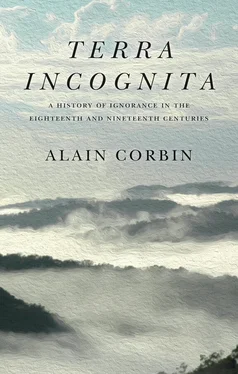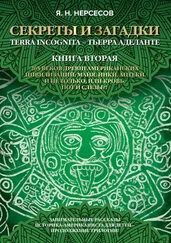Jacques-Bénigne Bossuet’s writings are significant in this context. His 1681 Discours sur l’histoire universelle [ Discourse on Universal History ], written to educate the French Dauphin, calculates the earth’s past based on events recounted in Genesis. 2It seamlessly connects the early stages of the earth to the birth of history as it was then known, thereby establishing the planet’s chronology as Bossuet saw it – from the origins of the earth itself, which he believed he could date, to a straightforward reading of the events recorded in Genesis.
Bossuet noted the date of each event in the margins of his book, from the Creation to Charlemagne’s reign. The presence of well-known dates, for instance from the history of the Roman empire, lends an air of legitimacy to the dates of origin that Bossuet makes up with little explanation.
His methodology is interesting: as Georges-Louis Leclerc, Comte de Buffon, was later to do, he divided history up into eras. I will focus on the first of these. It began with the ‘grand spectacle’ of Creation, which Bossuet’s marginal note dates to ‘world year 1’, or 4004 BC. This meant he dated the Creation to 5,682 years before the Discours sur l’histoire universelle . His second date was when earth began to be populated after the Fall of Man, in the year 129 after the Creation. Adam and Eve were in the Garden of Eden for no more than a century or so.
The first major event that was crucial to date was, of course, Noah’s Flood. Bossuet pinned it down to the year 1656 after creation, or 2348 BC. After the Flood, he wrote, began ‘the decrease of man’s life [and] the alteration of diet’ 3which marked the first events of known history. Bossuet’s estimation that the earth was six thousand years old, coming from a leading scholar of the last third of the seventeenth century, was widely shared, at least by those who asked themselves such questions. Nonetheless, can it really be argued that his contemporaries did not have the capacity to make the imaginative leap out of Genesis to suggest other timescales, foreshadowing the coming scientific revolution?
One particularly challenging passage in La Bruyère’s 1692 work Les Caractères [ Characters ], which I have not found quoted in books on dating the origin of the earth in the seventeenth century, is worth looking at here. La Bruyère, eager to demonstrate the existence of God to free thinkers, writes that God’s existence cannot be questioned, even if the date of the Creation were to be pushed back ‘Many million years, nay many thousand millions of years’ (which he tacitly suggests would be ridiculous). In a word, he continues, ‘all Time, is but an instant, compared with the duration of God, who is Eternal: The Extent of the whole Universe is but a Point, an Atom, compared with his Immensity […] what [is] the Extent of that Grain of Sand, which is call’d the Earth?’ 4This demonstrates that at the tail end of the seventeenth century, it was indeed thinkable to picture the earth as billions of years old, as early-twenty-first-century research indicates is the case, even if the idea was then dismissed as absurd.
Diluvial theories, which sought to explain the structure of the earth by reference to Noah’s Flood, were around for over a century after the Discours sur l’histoire universelle , though without further attempts to calculate the age of the planet. It is worth comparing Bossuet’s and Ussher’s estimations with that put forward by Buffon a century later: he probably developed it as early as 1749, though it was only published in 1778. 5Buffon’s calculations in Époques de la nature [ The Epochs of Nature ] are not based on Bible readings, but rather on the belief that the planet’s internal heat results from a gradual cooling process that began when it was first formed as a ball of fire. Buffon considered his theory to be irrefutable. 6
Buffon worked on experiments to date the stages of earth’s cooling process, which he saw as eras in its history. Arguing that the planet is made up of matter similar to glass, he believed that it would eventually cool to the point of dying, predicting global extinction by cooling rather than the Apocalypse of the New Testament. By his calculations, the earth would become too cold to inhabit in 93,000 years, when humans, flora and fauna, and the earth itself would freeze to death.
According to Buffon, the history of the earth was divided into seven periods. In the first, earth, like the other planets, was a molten mass that took on an ellipsoid shape. It had been known that the earth was flatter at the poles, shaped like a pumpkin rather than an orange, since La Condamine’s expedition to Peru in 1735 and Maupertuis’s expedition to Lapland in 1736–7. 7In the second era, Buffon argued, the earth solidified to the core, becoming a great mass of glass-like material that formed the basis of the primitive, non-fossiliferous mountains. He calculated it took 2,905 years for the earth to solidify all the way through and a further 33,911 years for it to become hard enough to touch.
Buffon’s third era corresponded to the sedimentary history of the earth once it was solid. The oceans covered the continents and formed calcareous deposits from the shells of sea creatures. The fourth era began when the oceans shrank back and volcanoes developed as slowly accreted combustible matter caught fire. In the fifth, elephants, hippos and other large land animals known to inhabit the hottest regions lived in more northerly climes, where the climate then suited them. In the sixth, the continents split apart and humans came into existence. It then took a further 74,047 years for the planet to cool to its eighteenth-century temperature. Buffon therefore calculated that the earth had formed 110,763 years before. Even then, his manuscripts indicate that he considered the possibility of much longer timescales, up to ten million years.
This matches a clear trend shared by other thinkers, including Immanuel Kant and the early geologists Barthélemy Faujas de Saint-Fond and Jean-Louis Giraud-Soulavie. The imaginary of grand geological timescales that rose to prominence in the decade between 1760 and 1770 is one of the fundamental aspects of the representation of earth’s history and morphology. It is impossible to measure how far it extended across the social spectrum, as I suggested at the start of this chapter. Nonetheless, it was the most significant difference in the beliefs of Buffon and his contemporaries and represents the starting point for a decisive stratification between the haves and have-nots of knowledge.
For a measure of this complexity, we now turn to Bernardin de Saint-Pierre’s Études de la nature , published in 1784, a wide-ranging book that was still shaped by a belief in the impact of the Flood, and more broadly in Providentialism, proclaimed at the same time by Bernard Nieuwentijdt’s Het regt gebruik der werelt beschouwingen, ter overtuiginge van ongodisten en ongelovigen [translated into English as The Religious Philosopher, or the Right Use of Contemplating the Works of the Creator ] and Noël-Antoine Pluche’s Spectacle de la nature [ Spectacle of Nature ]. Bernardin de Saint-Pierre opened with a critique of the hypothesis that the earth was originally molten. He also argued that the sea could not have formed mountain ranges, since it could never have risen to such a level: it had been repeatedly noted since Antiquity that God had set an invisible marker on coastlines that the sea could not pass. In short, the earth’s history was entirely shaped by God’s word.
Bernardin de Saint-Pierre’s views on the poles, tides, currents and sea ice are sometimes strikingly accurate, suggesting his ideas are not to be dismissed out of hand. To the modern reader, they are at odds with his flights of lyricism on the impact of Noah’s Flood. Though there is little direct evidence of his influence, Bernardin de Saint-Pierre’s renown suggests that many people may have been swayed by his view ascribing ‘the general deluge to a total effusion of the polar ices’, 8combined with water falling from the clouds and melting from mountain ice caps. He dismisses the cataracts of the ‘great abyss’ in favour of a more scientific vision. For Bernardin de Saint-Pierre, the cataclysm was caused by the sun drifting temporarily from its elliptical course, setting the polar regions aflame:
Читать дальше






![Сергей Спящий - Время terra incognita [СИ]](/books/395082/sergej-spyachij-vremya-terra-incognita-si-thumb.webp)



